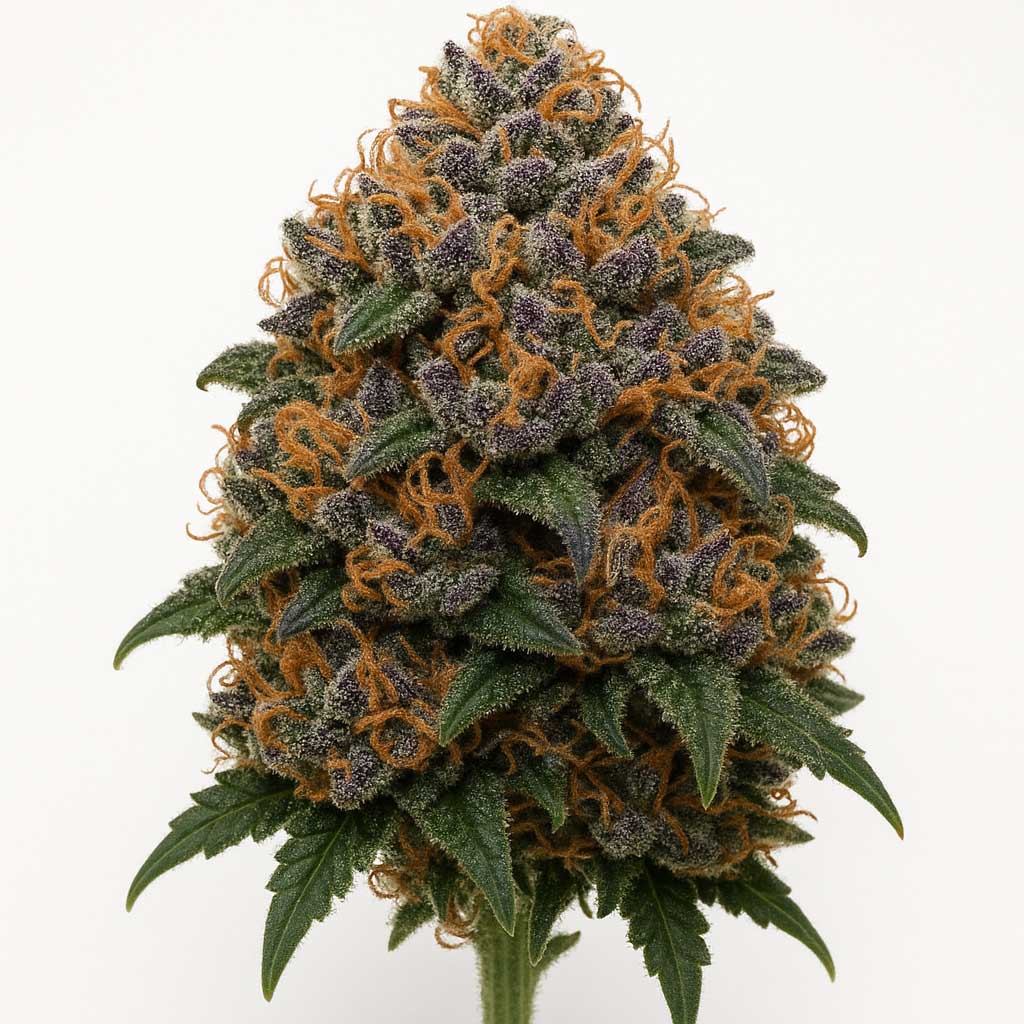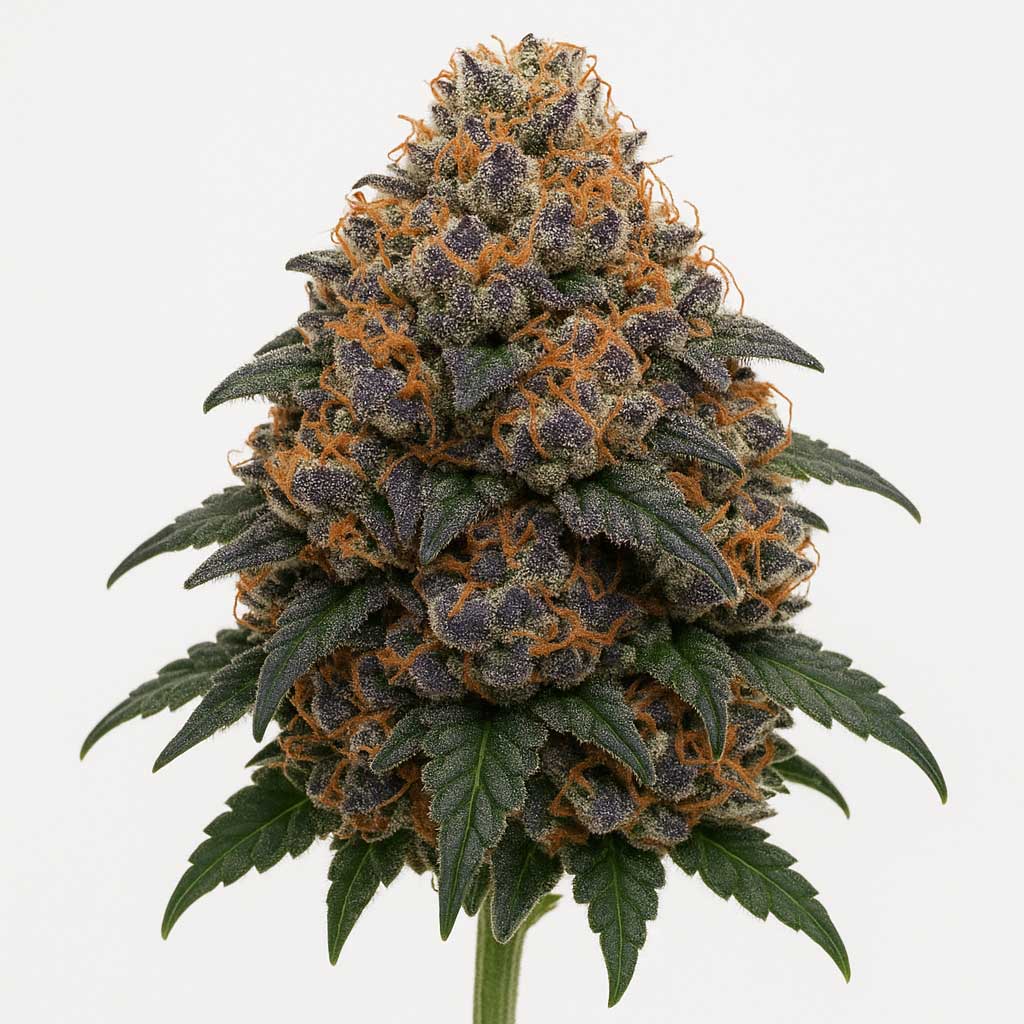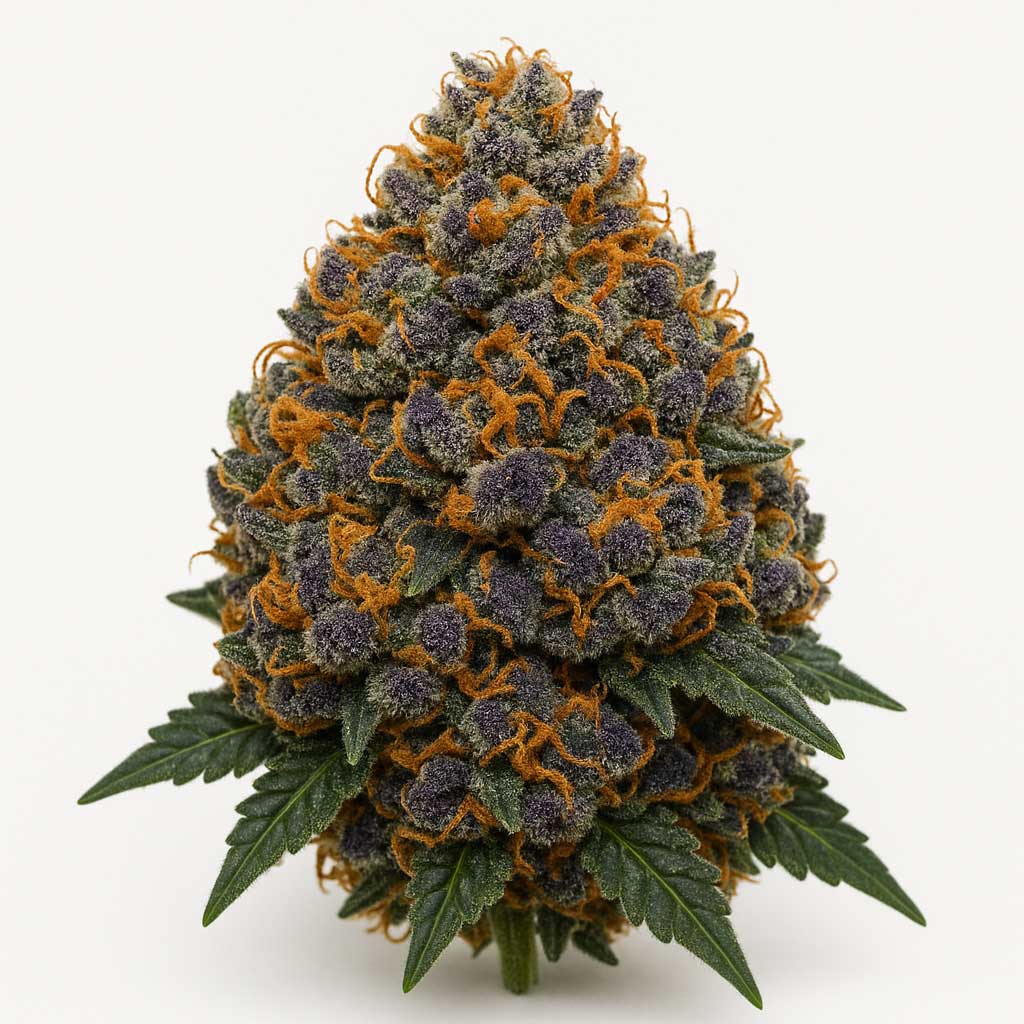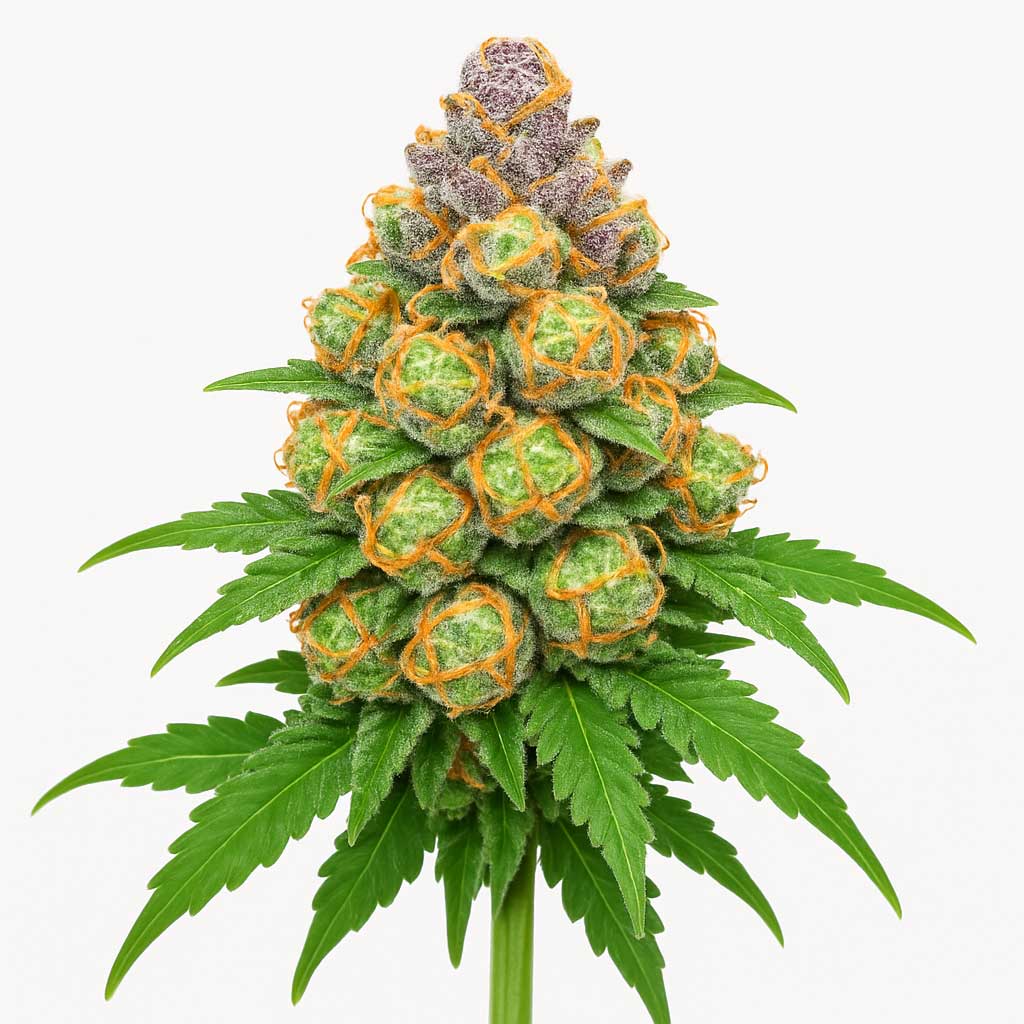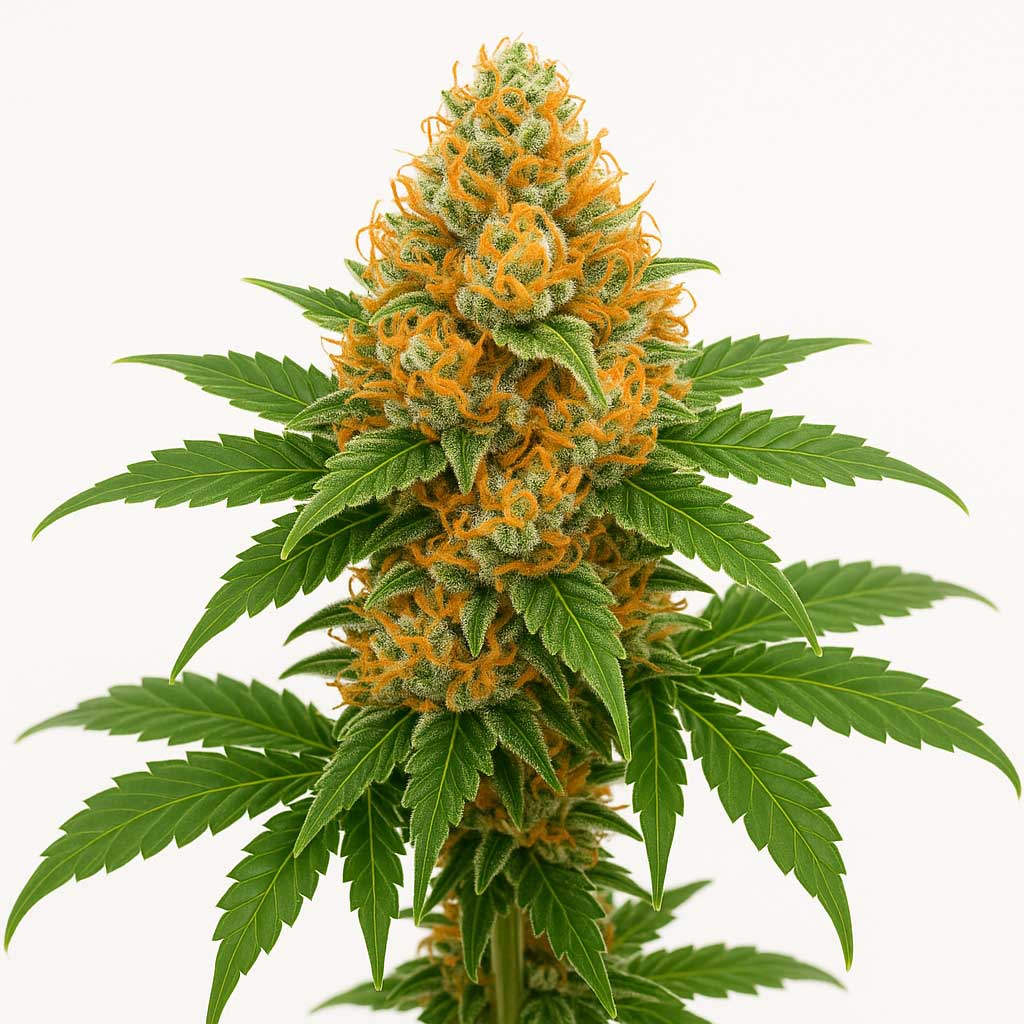Super Boof (Cannabis Strain) — Strainpedia
Super Boof (also known as Blockberry) is a potent Hybrid cultivar derived from Black Cherry Punch x Tropicana Cookies. Recognized for its dense, colorful buds and intensely fruity, citrus-forward aroma, it is frequently referenced in horticultural education for its high resin production and balanced effects. The information below is intended strictly for scientific and botanical reference.
Quick Facts
| Genetics | Black Cherry Punch x Tropicana Cookies |
|---|---|
| Variety | Balanced Hybrid (often 50/50) |
| Flowering Time | 8–10 weeks (indoors) |
| Yield Potential | 450–600 g/m² |
| Plant Height | 90–140 cm; moderate stretching; responsive to training |
| Climate Preference | Warm, Mediterranean (prefers stable conditions) |
| Difficulty | Intermediate (requires attention to humidity and light intensity) |
Scientific & Botanical Overview
Super Boof plants exhibit robust growth with moderate vertical stretch and strong lateral branching. The buds are typically dense, chunky, and heart-shaped, often presenting a mix of deep greens and purple hues inherited from the Black Cherry Punch lineage. A thick coating of milky-to-amber trichomes gives the buds a “wet” or silver-sheen appearance. The flowering period is typically 8–10 weeks, during which terpene production becomes highly pronounced, requiring excellent ventilation.
Effects & Use-Cases (Reported)
- Commonly reported effects: euphoric, uplifting, giggly, and creative; often followed by gentle body relaxation without heavy sedation.
- Use-case context: noted for enhancing focus and mood elevation, making it suitable for daytime activities, social settings, or creative pursuits.
- Note: These are observational reports, not medical claims; outcomes are not guaranteed.
Aroma & Flavors
- Aroma: highly pungent, featuring dominant notes of tart cherry, sour citrus (tangerine/orange zest), and a creamy, earthy undertone.
- Flavor: a lively blend of sweet cherry, bright citrus, and tropical fruit on the inhale, balanced by an earthy, slightly spicy finish.
- Terpene associations: myrcene, limonene, caryophyllene.
Tested Cannabinoid & Terpene Ranges
| Compound | Typical Range* | Notes |
|---|---|---|
| Δ⁹-THC | ~25–30%+ | Known for high potency; ranges vary significantly by phenotype and cultivation method. |
| CBD | ~0–1% | Generally present at low, trace levels. |
| Myrcene | ~0.4–1.0% | Often dominant; contributes to the earthy/herbal base and relaxation. |
| Limonene | ~0.3–0.8% | Strong citrus profile; associated with mood elevation. |
| Caryophyllene | ~0.2–0.6% | Spicy, peppery note; interacts with CB2 receptors. |
| Linalool | ~0.1–0.3% | Subtle floral notes; adds complexity to the bouquet. |
*Ranges are literature- and lab-report-informed references and can differ with environment, harvest timing, post-harvest handling, and analytical methods.
Cultivation Notes
- Light Cycle: 18/6 vegetative; 12/12 flowering
- Humidity Targets: ~40–50% during flower; needs strong airflow to prevent mold in dense colas.
- Nutrition: Moderate to heavy feeder; requires robust Cal/Mag supplementation alongside balanced NPK.
- Training: Topping, Fimming, LST (Low-Stress Training), and SCROG are highly recommended to manage canopy and maximize light exposure.
- Harvest Window: Early to Mid-October outdoors (Northern Hemisphere), requires careful moisture management.
Grower Notes (Week-by-Week Snapshot)
- Weeks 1–3 (Transition/Stretch): aggressive vegetative growth; manage height with training; ensure stable pH/EC for rapid nutrient uptake.
- Weeks 4–6: flower site development and bulking; perform selective defoliation to improve light penetration; increase Phosphorus and Potassium.
- Weeks 7–8: peak resin production and aroma intensity; continue monitoring humidity closely; add structural support for heavy colas.
- Weeks 9–10: ripening; initiate final flush based on trichome maturity; watch for final color expression (purple/red hues).
- Post-Harvest: dry ~18–20 °C, 55–60% RH for a slow cure to preserve volatile terpenes.
Timelines shift with genotype and environment; prioritize plant health markers and trichome maturity over calendar counts.
Genetic Lineage
Super Boof originates from breeder Blockhead Buds‘ initial cross, which was dubbed Blockberry. It gained massive popularity after Michigan grower Mobile Jay pheno-hunted a standout variety and popularized it under the name Super Boof. The lineage of Black Cherry Punch (known for deep color and relaxation) and Tropicana Cookies (known for bright citrus flavor and cerebral effects) results in a highly flavorful, balanced, and potent modern hybrid.
Research Insights
Super Boof is a subject of study for its pronounced synergy between high THC and its terpene profile, particularly the high concentrations of myrcene and limonene. This combination is often cited in anecdotal reports to provide a complex experience that is both mentally uplifting (limonene) and physically soothing (myrcene), underscoring the importance of the entourage effect in hybrid cultivars.
Frequently Asked Questions
Is Super Boof an Indica or Sativa?
Super Boof is classified as a Balanced Hybrid, generally sitting at a 50/50 indica-sativa split, delivering both cerebral euphoria and physical relaxation.
What does Super Boof smell and taste like?
It presents a bold, fruity aroma of tart cherry and sour citrus zest, with a corresponding flavor profile that is sweet, fruity, and slightly earthy.
What are the typical effects?
Reported effects include an initial rush of euphoria, creativity, and giggly focus, followed by a comfortable, mild body relaxation.
How long does Super Boof take to flower?
Super Boof typically flowers in 8–10 weeks indoors, with outdoor harvest generally occurring in early to mid-October.
Is it suitable for beginners?
Super Boof is considered Intermediate in difficulty due to its high nutrient demand, need for canopy management, and sensitivity to late-flowering humidity.
Educational Disclaimer: This page is provided for scientific and horticultural reference only and does not constitute medical or promotional advice. Cannabis cultivation, possession, and use are regulated by local laws. Always comply with applicable legislation in your region.

